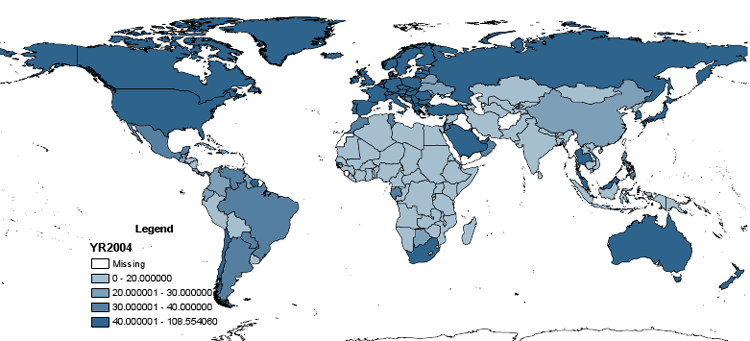You want cell phone entrepreneurs, we’ll give you cell phone entrepreneurs
Last week we posted some cool maps showing the spread of cell phones especially in Africa over the last decade. We called this “a triumph of bottom-up entrepreneurial success,” but you weren’t convinced. You thought it was foreign direct investment (FDI). Provide more evidence that entrepreneurs are part of this picture, you said. Aid Watch never declines a challenge: 1) OK, it’s true that 52 percent of the African Market is dominated by 6 multinationals: Orange (France), Vodafone/Vodacom (UK/South Africa), Zain (Kuwait), MTN (South Africa), Moov (UAE), and Tigo (Luxembourg). But that other 48 percent is the battleground of dozens more, many of them home-grown. (Also we heard a rumor that South Africa is located somewhere in Africa.) To give an example from The White Man’s Burden:
Entrepreneur Alieu Conteh started building a cellular network in the Democratic Republic of the Congo … when it was still in the midst of its civil war in the 1990s. He couldn’t get foreign manufacturers to ship cellular towers into the country with rebel soldiers around, so he got local men to weld scrap metal into a makeshift tower. Demand exploded for Conteh’s phones, and in 2001 he formed a joint venture with the South African firm Vodacom. One illiterate fisherwoman who lives in the Congo without electricity relies on her cell phone to sell her fish. She can’t put the fish in a freezer, so she keeps them alive on a line in the river until customers call to place an order.
Sudanese-born entrepreneur Mo Ibrahim is another example. His mobile telecom company, Celtel, had about 5 million subscribers in 13 African countries when it was sold in 2004 for $3.4 billion. 100 Celtel employees, most of them African, earned more than $1 million from the sale. Celtel is now part of Kuwaiti-owned Zain, which serves 40 million subscribers in 17 African countries.
2) Being a successful mobile operator often requires big infrastructure investments, so it’s no surprise many of the first telecom firms to enter the African mobile market have been large. Multinationals investing in Africa to provide millions of Africans with essential service is a GOOD thing. Yes, the market needs more effective regulation, increased competition, and lower end-user costs, but those trends are now happening.
3) Multinationals spur smaller entrepreneurs. The Nigerian telecom sector has created some 450,000 indirect jobs since it was liberalized in 2000. And Uganda’s five mobile operators provide employment for more than 100,000 people, who work for the operators directly or indirectly, selling airtime or handsets. An Economist article noted:
In 2003 Ms [Mary] Wokhwale was one of the first 15 women in Uganda to become “village phone” operators. Thanks to a microfinance loan, she was able to buy a basic handset and a roof-mounted antenna to ensure a reliable signal. She went into business selling phone calls to other villagers, making a small profit on each call. This enabled her to pay back her loan and buy a second phone. The income from selling phone calls subsequently enabled her to set up a business selling beer, open a music and video shop and help members of her family pay their children’s school fees.
4) Finally, farmers and fishermen now check prices in markets across the country before selling their goods, while unbanked buyers can make payments with mobile banking technologies. Individual entrepreneurs are beneficiaries of mobile technology’s spread in a big way.
 From Aid to Equality
From Aid to Equality




 The Defense Department just sponsored a contest in which they randomly placed 10 large red balloons across the United States and challenged teams to find them all. The one who found all 10 first would get $40,000.
The Defense Department just sponsored a contest in which they randomly placed 10 large red balloons across the United States and challenged teams to find them all. The one who found all 10 first would get $40,000.